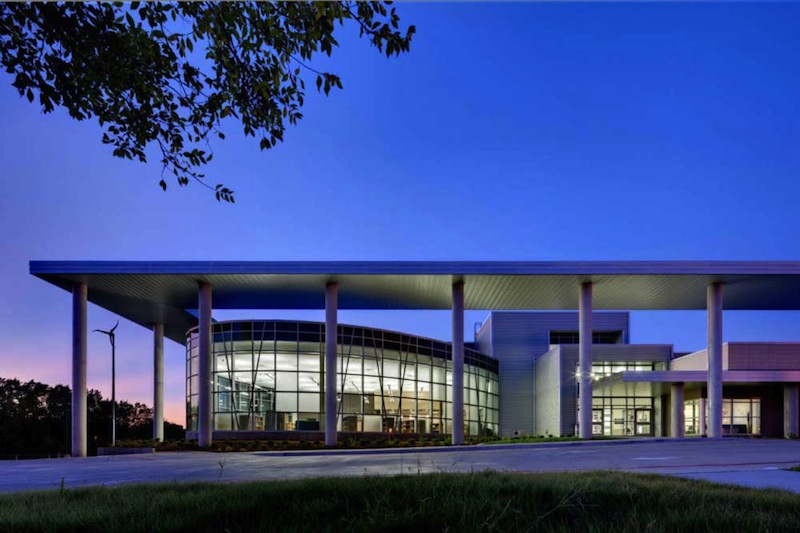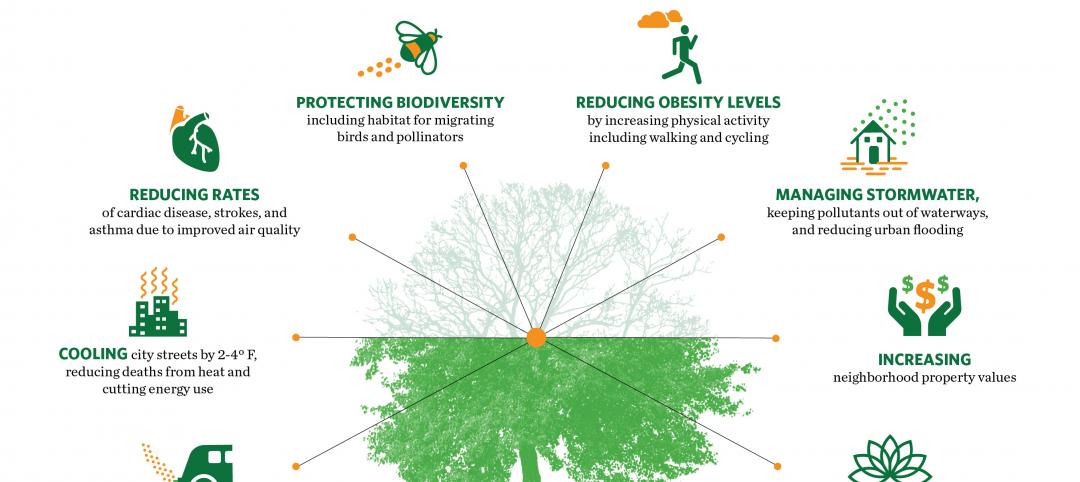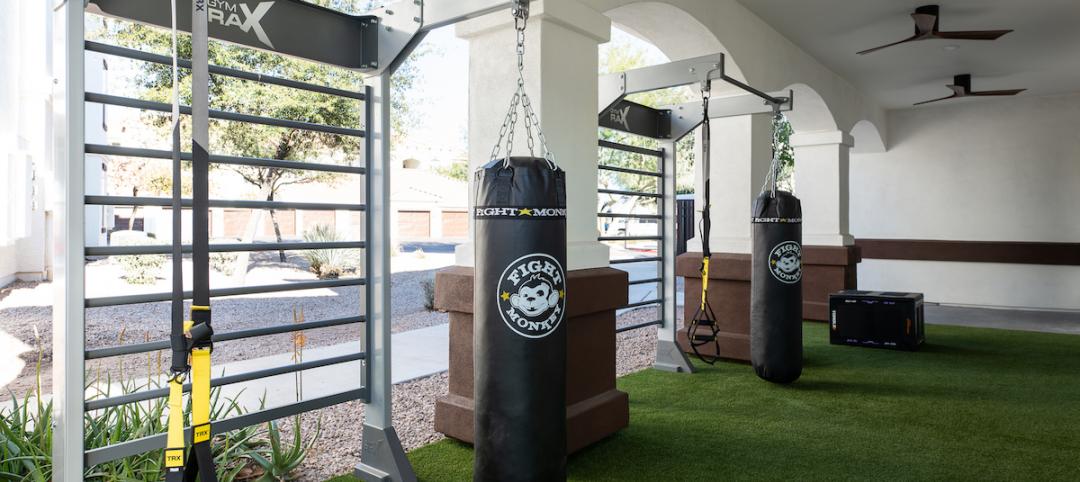The Center for Green Schools at the U.S. Green Building Council (USGBC) today announced its third annual “Best of Green Schools” list, which recognizes top educational institutions, individuals and initiatives across the country for environmental efforts.
“In reviewing the nominations for the Best of Green Schools 2013 list, what we experienced more than anything was profound gratitude for the thousands of champions who are catalyzing the green schools movement and demonstrating to the nation and the world that where our children learn matters,” said Rachel Gutter, director of the Center for Green Schools at USGBC. "This list represents exemplary leadership from schools, campuses, students, policy makers and more who are raising the bar when it comes to creating healthy, safe and resource-efficient schools.”
The Best of Green Schools list highlights schools, individuals and communities working toward the common goal of healthy, high-performing learning places for all. The list recognizes the hard work being done across the country to make schools better and honors the best examples in the green schools movement.
The recipients of the Best of Green Schools 2013 include:
K-12 School – Lady Bird Johnson Middle School (Irving, Texas): LEED Gold Lady Bird Johnson Middle School is the first net-zero energy school in the state of Texas. At 152,250 square feet, the campus is the largest net-zero educational facility in the country.
Higher Education Institution – Emory University (Atlanta, Ga.): Emory University has identified sustainability as one of its top priorities — to help restore the global ecosystem, foster healthy living and reduce the university’s impact on the local environment. Emory has among the highest number of square feet of LEED-certified space of any campus in America.
Ambassador – Lori Braunstein, Delaware Valley Green Building Council (DVGBC): As director for green schools at DVGBC, Braunstein has developed an effective and comprehensive strategy for engaging and supporting teachers, students, facilities managers and administrators around sustainability programs in schools. She also initiated the statewide Pennsylvania Green & Healthy Schools Partnership to bring together key stakeholders from the green building, environmental education and health and wellness fields around an agenda for green and healthy schools.
Policy Maker – Colorado state Sen. Andy Kerr: Kerr has been one of the strongest proponents of green schools in Colorado and throughout the country for many years. In the spring of 2013, he successfully passed SB 13-279, requiring all school districts in Colorado to build new schools or to reconstruct schools to the highest possible energy efficiency.
Moment for the Movement – California Proposition 39, the Clean Energy Jobs Act: Under the landmark Clean Energy and Jobs Act, $2.5 billion over the next five years will be directed toward energy efficiency projects and repairs to promote healthy, high-performing schools in California.
Business Leadership – Houghton Mifflin Harcourt (HMH): HMH is helping to transform learning environments by driving the conversation around sustainability education and the Common Core. HMH also serves as a partner of the Center for Green Schools’ Green Apple program, making a financial contribution in honor of school customers who switch from physical textbook samples to the (greener) virtual alternative.
Community Event – Green Apple Day of Service event at Duckett’s Lane Elementary School (Elkridge. Md.): Grimm +Parker Architects joined Dustin Construction and the students, principal and staff of Duckett’s Lane Elementary School on Sept. 29, 2013, to host and coordinate a student-led scavenger hunt for environmental features in and around the new school. Stations were set up to demonstrate how the building and site are teaching tools for their environmental literacy curriculum.
Collaboration – Celebrate Sustainability: This "green partnership" is among Virginia Tech, the town of Blacksburg, Va. and Sustainable Blacksburg, a local citizen's group in the town. Every year, the three organizations come together to program a week's worth of events that recognize and celebrate the sustainability achievements of the school and the town over the previous year.
Transformation – The Green Schools Academy (as led by Jenna Cramer, vice president of green schools for the Green Building Alliance): The Green Schools Academy program brings together private, public, parochial and charter schools to work toward a culture of sustainability and transformation in healthy schools for all children.
Student Leadership – Bluegrass Youth Sustainability Council (Fayette County, Ky.): The Bluegrass Youth Sustainability Council (BYSC) is a project-based organization composed of students from all Fayette County high schools. The BYSC meets monthly to discuss collaborative environmental outreach projects, partnership prospects and leadership and post-secondary opportunities in all areas of sustainability including energy management, outdoor classrooms, waste management, water quality and air quality.
Please visit centerforgreenschools.org/bestof2013 for more information on each of this year’s recipients.
Related Stories
Market Data | Apr 29, 2022
U.S. economy contracts, investment in structures down, says ABC
The U.S. economy contracted at a 1.4% annualized rate during the first quarter of 2022.
Green | Apr 26, 2022
Climate justice is the design challenge of our lives
As climate change accelerates, poor nations and disadvantaged communities are suffering the first and worst impacts.
Multifamily Housing | Apr 26, 2022
Fitness centers for multifamily housing: Advice from 'Dr. Fitness,' Karl Smith
In this episode for HorizonTV, Cortland's Karl Smith shares best practices for designing, siting, and operating fitness centers in apartment communities.
Mixed-Use | Apr 26, 2022
Downtown Phoenix to get hundreds of residential and student housing units
In fast-growing Phoenix, Arizona, a transit-oriented development called Central Station will sit adjacent to Arizona State University’s Downtown Phoenix campus.
Hotel Facilities | Apr 25, 2022
U.S. hotel construction pipeline up 2%, with 5,090 projects in the works
The total U.S. hotel construction pipeline stands at 5,090 projects and 606,302 rooms at the end of the first quarter of 2022, up 2% by projects, but down 3% by rooms, according to the Q1 2022 Construction Pipeline Trend Report for the United States from Lodging Econometrics (LE).
Codes and Standards | Apr 25, 2022
Supply chain constraints, shifting consumer demands adding cost pressures to office fit-outs
Cushman & Wakefield’s 2022 Americas Office Fit-Out Cost Guide found supply chain constraints and shifting consumer demands will continue to add pressure to costs, both in materials and labor.
Sports and Recreational Facilities | Apr 25, 2022
Iowa's Field of Dreams to get boutique hotel, new baseball fields
A decade ago, Go the Distance Baseball formed to preserve the Iowa farm site where the 1989 movie Field of Dreams was filmed.
Architects | Apr 22, 2022
Top 10 green building projects for 2022
The American Institute of Architects' Committee on the Environment (COTE) has announced its COTE Top Ten Awards for significant achievements in advancing climate action.
Mixed-Use | Apr 22, 2022
San Francisco replaces a waterfront parking lot with a new neighborhood
A parking lot on San Francisco’s waterfront is transforming into Mission Rock—a new neighborhood featuring rental units, offices, parks, open spaces, retail, and parking.
Legislation | Apr 21, 2022
NIMBYism in the Sunbelt stymies new apartment development
Population growth in Sunbelt metro areas is driving demand for new apartment development, but resistance is growing against these projects.

















